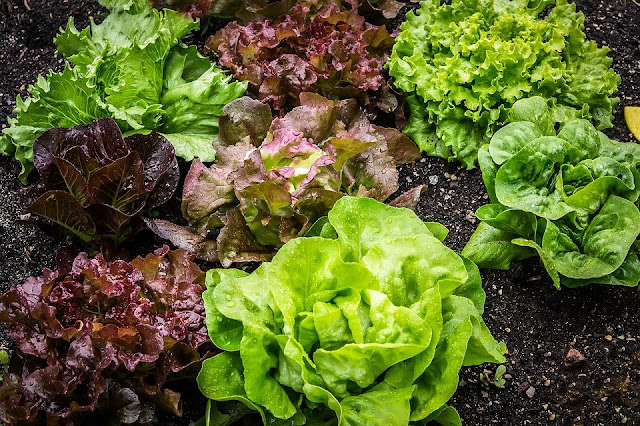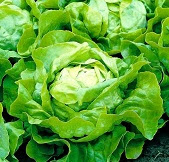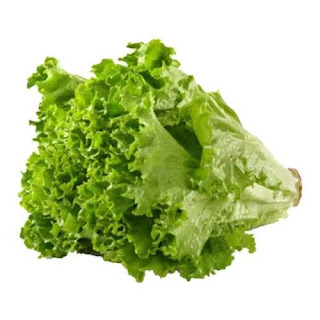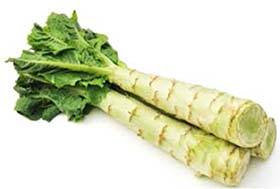Cultivation of Lettuce in India; A Complete Information Guide
Cultivation of Lettuce in India; A Complete Information Guide
Nutritive Value of the Lettuce Crop;
The nutritive value of lettuce in 100 gm of the edible portion is given below :
|
Component |
Values |
Component |
Values |
|
Moisture |
94 g |
Vitamin C |
8 mg |
|
Carbohydrates |
2.8 g |
Malic Acid |
170 mg |
|
Fiber |
0.6 g |
Calcium |
140 mg |
|
Fat |
0.2 g |
Iron |
0,5 mg |
|
Protein |
1.3 g |
Phosphorus |
25 mg |
|
Calories |
39.74 |
Sulphur |
12 mg |
|
Vitamin A |
540 IU |
Chlorine |
39.74 mg |
10 Health Benefits of Lettuce;
4) It has health beneficial omega-3 fatty acids,
5) Lettuce is a complete protein supplement.
6) Lettuce helps with Insomnia
7) Lettuce is Alkaline Forming
Required Climatic Condition for Lettuce Crop ;
Soil and its Preparation for Lettuce Cultivation ;
Loam soil rich in organic matter is best suited for a lettuce crop. The optimum soil pH is 5.8 to 6.6. The soil should be prepared thoroughly.
Important Varieties of Lettuce Crop ;
|
Butter Head or Head Lettuce (Lactuca sativa var. capitata)
|
Butterhead lettuces have very soft, buttery-textured leaves that form very loose “heads”. They boast a mild, sweet, and succulent flavor. Heads are loosely folded and have various range of color from pale green to purple-red. The unique textures and colors of Butterhead Lettuce varieties are highly prized by gourmet cooks. |
|
Leafy lettuce (Lactuca sativa var. crispy)
|
Leaf lettuce is in three types: red, green, and oak. Leafy lettuce does not have a “head” because the leaves originate from a single stalk. Due to this reason, leaf lettuce is generally more perishable than head varieties. You’ll often see it in “baby lettuce,” mesclun, and spring mixes because of its tenderness. The red leaf has a burgundy tint and mild flavor, similar to that of green leaf, while the oak leaf is spicier and nuttier. To avoid instant wilting, postpone dressing leaf lettuce until just before serving. |
|
Cos or Romanian lettuce (Lactuca sativa var. longifolia)
|
Romanian lettuce has long, slightly bitter leaves and sturdy, sweeter centers, it provides a sharp robust crunch to any meal. When it is grown to maturity, the upper tips of the leaves close to form a heart and it consequentially excludes light, coloring the internals to more of a blonde green. It is these paler leaves that are most tasty, tender, and are most desirable. |
|
Celtuce or stem lettuce (Lactuca sativa var. aspergina).
|
Celtuce is also known as stem lettuce, celery lettuce, asparagus lettuce, or Chinese lettuce, It is a variety of lettuce that is grown primarily for its thick stem as well as its leaves. It is used as a vegetable and is very popular in China and Taiwan, where the stem is interchangeably called wosun or qingsun |
Sowing of Seeds for Lettuce Cultivation ;
(a) Sowing time of Lettuce.
(b) Seed rate. The seed rate is 400 gm per acre.
Manuring in Lettuce crop;
The manurial schedule is 20 to 25 Cartloads of Compost or F.Y.M, 50 kg urea, 30 kg Superphosphate and 30 kg Muriate of Potash per acre and these should be applied with the last preparatory tillage. 30 kg urea is applied as a top dressing after two weeks of sowing.
Intercultural Operation in lettuce ;
Weeding and hoeing are done to keep down the weeds during the early stages of growth. As we know that the roots of lettuce crops are very shallow, hence the weeding should be accomplished very carefully without distributing lettuce. Usually weeding. After 15 days or according to need.
Irrigation Requirement for Lettuce Crop’
Irrigation should be given as and when is needed to maintain uniform soil moisture conditions in the soil.
Harvesting of lettuce Crop ;
Usually, The leaves harvested when they are young and tender. First harvesting is done 35 days after sowing.
The yield of Lettuce crop;
The average yield is 12-16 quintals per acre.









Pingback: Introduction to Hydroponics; Complete Information Guide - Agrovista-Farming